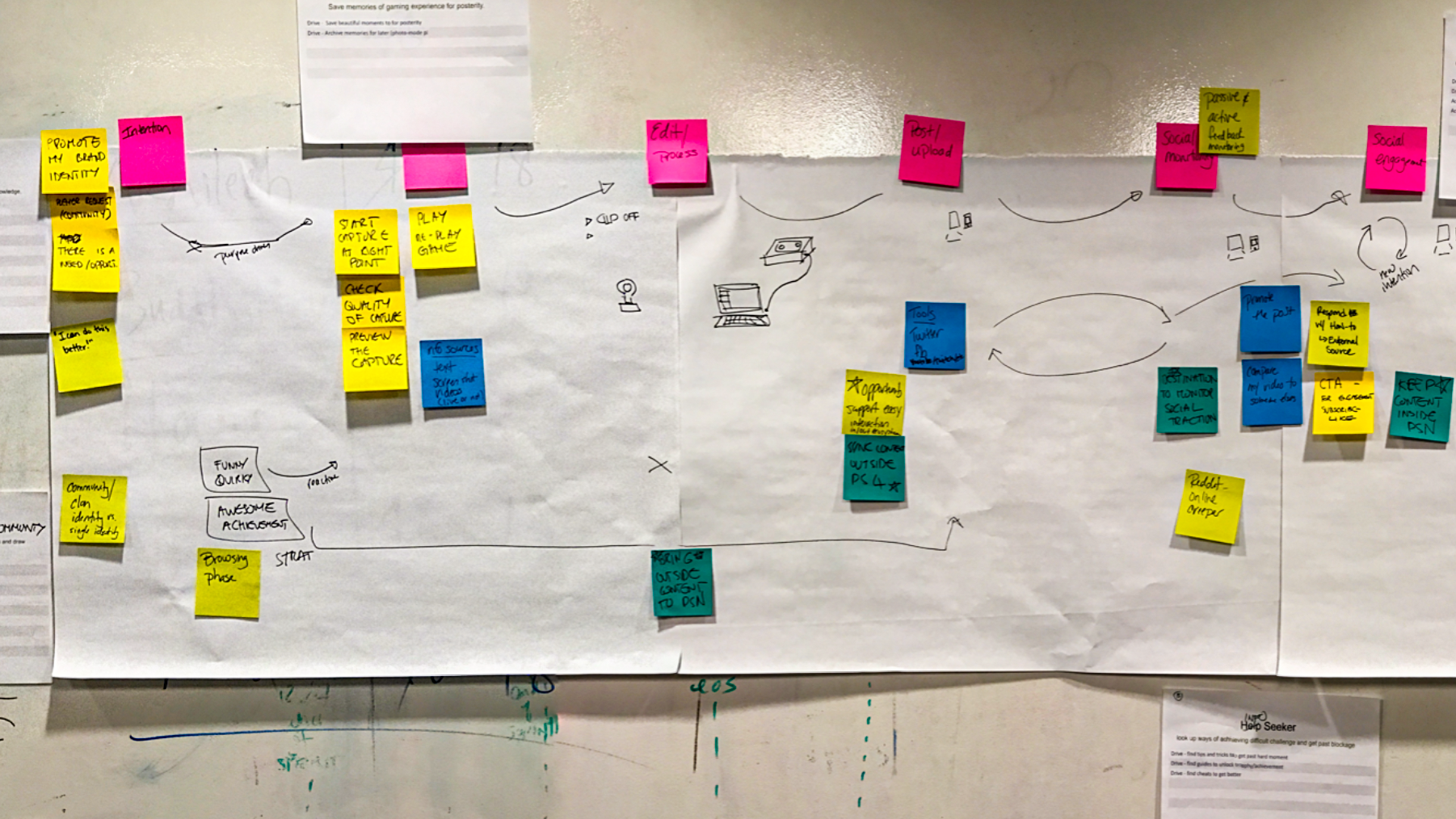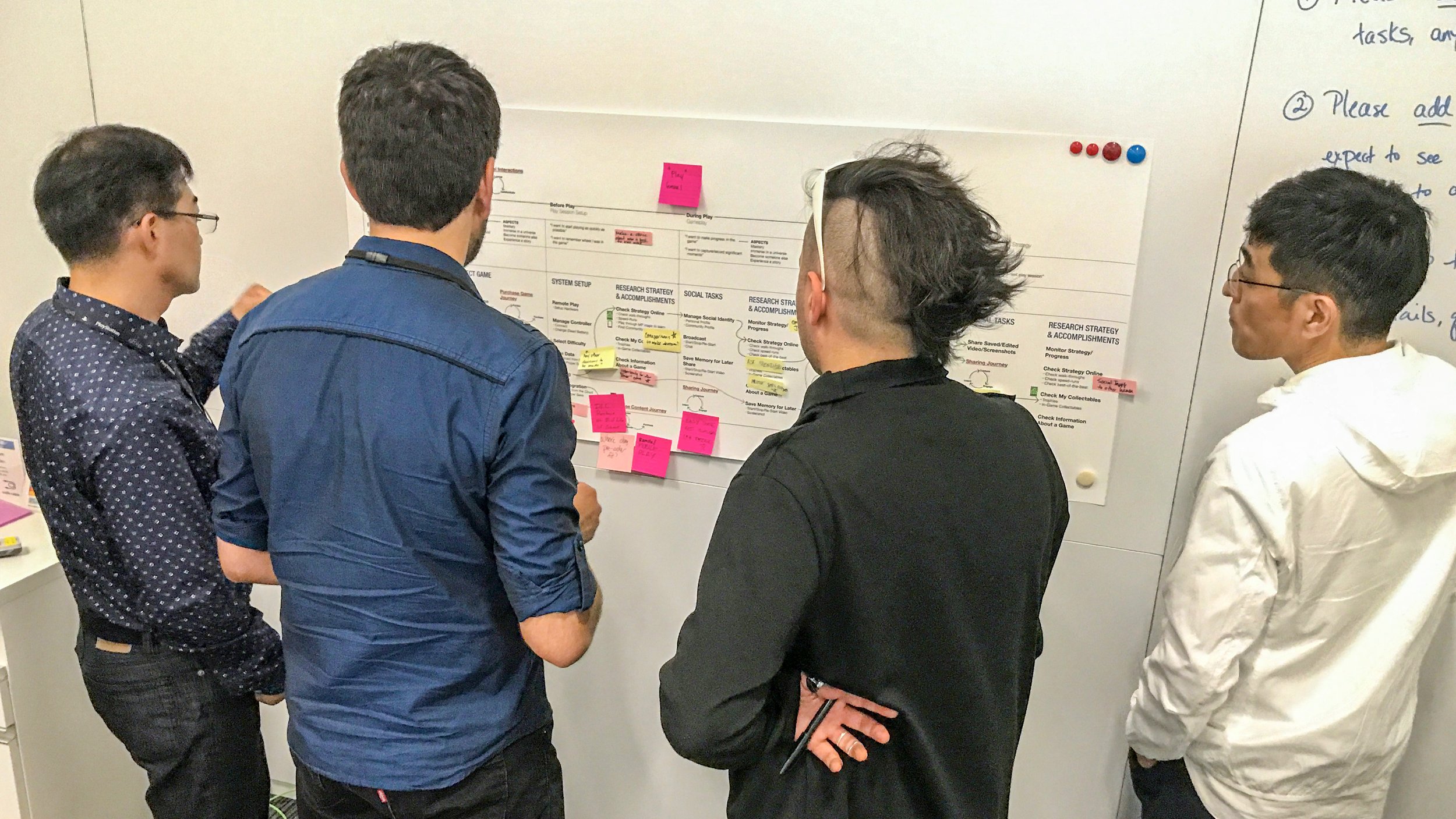
PS5
Concept To Launch
The PlayStation 4 ecosystem faced inconsistent UX and navigation issues as the console aged, impacting both user satisfaction and brand alignment. As PlayStation leadership envisioned the PS5, a user-centered approach was necessary to redefine the gaming experience.
Project Overview
PlayStation product teams are each centered around an area such as retail, gaming, videos, etc. Each of those teams conceived and created revolutionary and robust experiences, but PlayStation 4 was lacking meaningful and useful connections between those experiences. Our organization was mirrored in our UX.
As we embarked upon the development of the UI for PlayStation 5, we started to fall back into a siloed design process. Working with researchers and PMs, I led the creation of end-to-end user journey maps that would allow leadership and all cross-functional team members to understand the full picture of the system we were building.
These journey maps and scenarios were the backbone for the PS5 UX, and they also became the channel for collaboration and communication between our teams. Once the end-to-end scenarios were agreed on by each team, we were able to efficiently prioritize and coordinate our roadmaps, knowing that we were all working towards a cohesive end-to-end user journey.
Key Goals
Address pain points from the PS4 experience and build a cohesive UX for PS5.
Innovate features to differentiate PS5 from competitors.
Create a scalable navigation system integrating hardware and software seamlessly.
Research
We synthesized years of PS4 research, uncovering user pain points like complex game discovery and fragmented communication features.
Conducted journey mapping workshops to explore user behavior across the PlayStation ecosystem.
Identified the growing use of external devices for game assistance, laying the foundation for PS5's integrated in-game help features.
Ideation
Collaborated with cross-functional teams to develop navigation models inspired by architectural principles and user journeys.
Designed contextual action cards, persistent communication channels, and streamlined purchasing flows to prioritize user needs.
Advocated for incorporating mobile and web touchpoints into the experience.
Iteration
Refined navigation models with internal gamers and developers to test coherence across features.
Created scenarios and storytelling frameworks to align global teams on the end-to-end player experience.
Introduced taxonomy workshops to streamline screen tracking, allowing designers to navigate and iterate efficiently.
Business Outcomes
Successfully launched the PS5 with ~62 million units sold, becoming a benchmark for gaming consoles.
Introduced innovative features like contextual action cards and game-integrated help, enhancing player engagement and satisfaction.
Built a foundation for consistent UX across PlayStation’s ecosystem.
Key Learnings
Journey mapping and storytelling proved critical for aligning leadership on a cohesive vision.
Establishing a shared design language streamlined collaboration across global teams.
Scalable design frameworks reduced siloed work and improved design-to-development handoffs.
Documentation for a global organization, speaking dozens of languages. Collaborating toward a singular goal.












